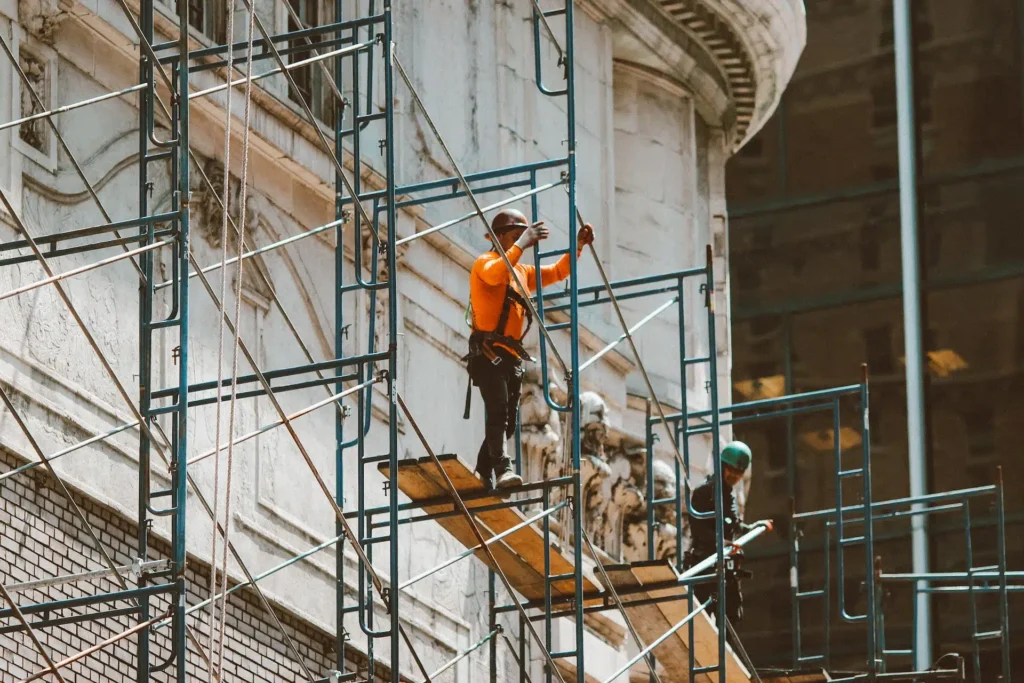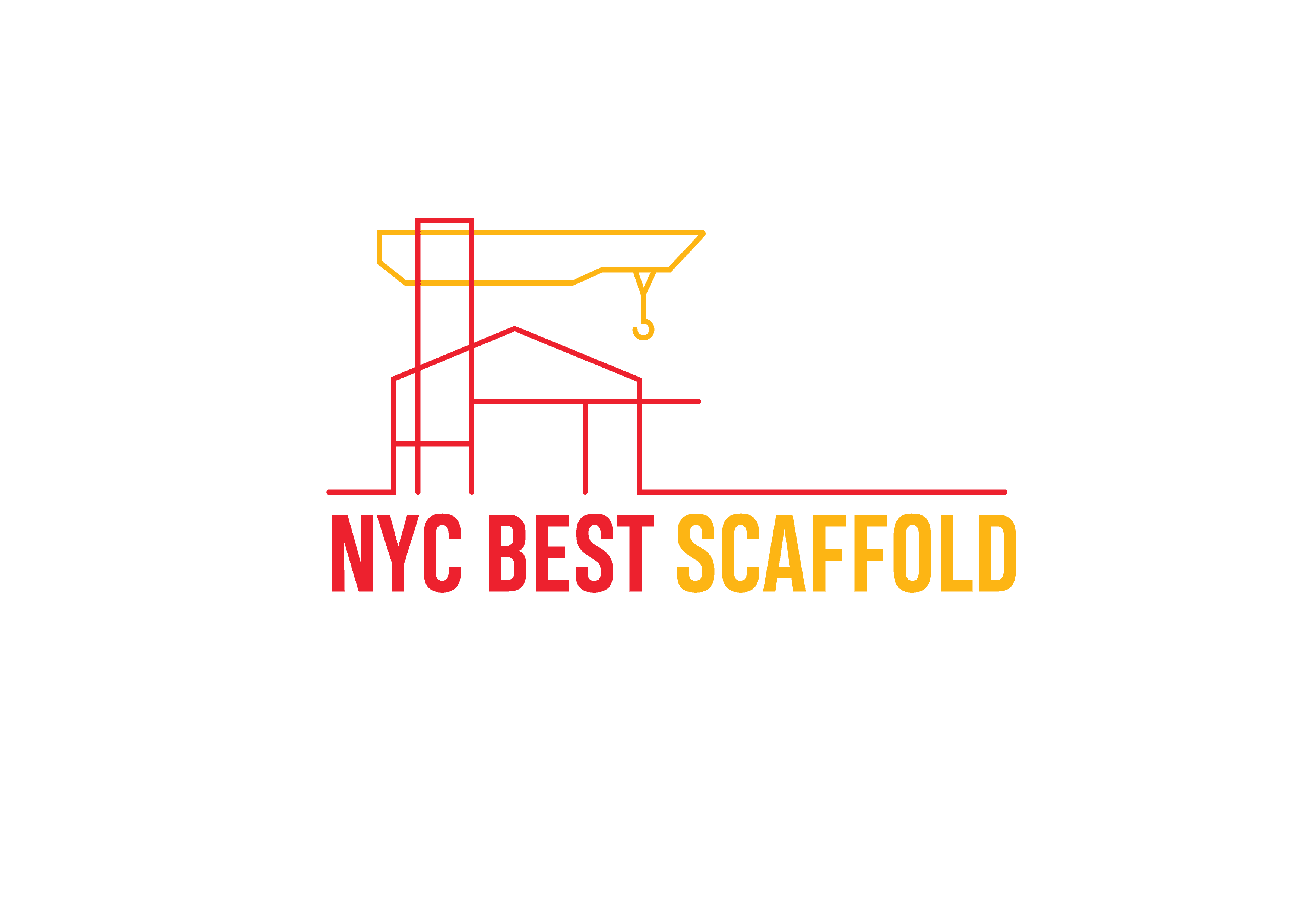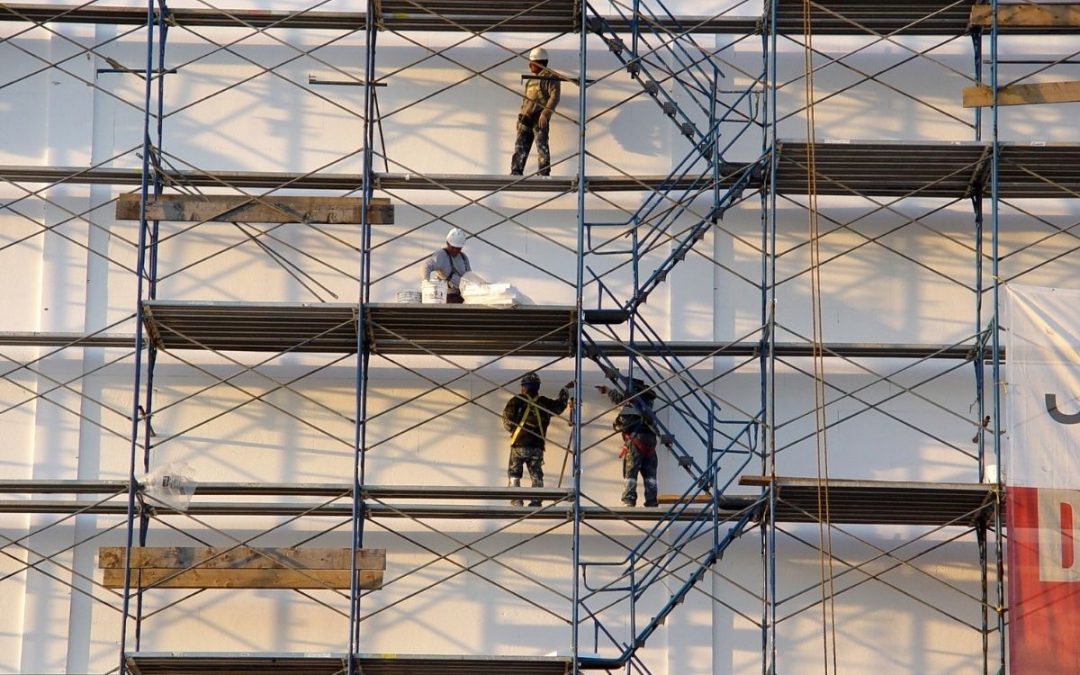New York City is an iconic metropolis where iconic skyscrapers dominate the skyline and historical buildings tell tales from bygone eras; thus restoration and renovation is both necessary and an act of preservation to maintain and promote New York City’s rich heritage. Restoration work ranges from elegant Broadway theater facades to intricate brownstone townhouse details. Each Building Contributing To NYC Best Scaffolding Unique Character while at the same time demanding careful planning, skilled craftsmanship, and sometimes Scaffolding NYC in order to maintain or renovate.
Scaffolding NYC: An Overview
Scaffolding NYC, at its core, is a temporary structure design to support workers and materials during building, maintenance or repair of structures. Composed of sturdy metal poles, wooden planks and various connectors, scaffolding provides workers with safe access to hard-to-reach areas as they perform necessary tasks or complete intricate restoration works.
NYC Scaffolding plays an essential role in restoration and renovation projects across New York City, enabling craftsmen to inspect, repair, and preserve architectural elements that may be centuries old. From fixing Victorian brownstone cornices to repointing prewar apartment blocks. Scaffolding NYC provides essential infrastructure that enables these tasks to be safely accomplished efficiently.
Preserving Architectural Heritage
Scaffolding plays an essential role in restoration projects to protect historic structures’ architectural heritage and integrity, especially in cities such as New York with landmarks such as Empire State Building and Statue of Liberty attracting millions of visitors each year. Maintaining these historic structures’ integrity not only has aesthetic but also cultural and historical importance.
Example:
Take, for example, the restoration of New York’s Woolworth Building; once one of the world’s tallest skyscrapers and an icon of early 20th-century prosperity. Following decisions to undertake extensive renovations in order to update infrastructure while preserving historic character of this landmark structure, scaffolding NYC became a ubiquitous presence around its perimeter – not only providing access for construction crews to do their work but also serving as a visual reminder of ongoing transformation, engaging the public’s imagination and stirring anticipation about when this project would conclude.
Scaffolding serves as a symbol of progress in neighborhoods like Brooklyn’s DUMBO (Down Under the Manhattan Bridge Overpass) and Manhattan’s SoHo (South of Houston Street), where former industrial buildings have been renovated into trendy loft apartments and art galleries, often as they undergo restoration or adaptive reuse projects. Here it signifies revitalization of once neglected urban spaces as well as protection of architectural heritage for future generations to enjoy.
Safety First
In addition to helping preserve historic buildings, scaffolding NYC also plays a vital role in safeguarding construction workers and the general public during restoration and renovation projects. Thanks to its sturdy construction and strict compliance with safety regulations, scaffolding provides a secure platform where workers can carry out tasks at various heights without fear of accidents or injuries occurring during restoration and renovation processes.
New York City, with its dense population of pedestrians navigating crowded sidewalks and vehicular traffic flowing seamlessly through bustling streets, makes ensuring the safety of construction sites an absolute priority. By installing scaffolding around buildings undergoing restoration or renovation projects, contractors can create a protected zone to shield passersby from falling debris while clearly delineating between their work site and its immediate surroundings.
NYC Scaffolding allows the installation of various safety measures, including guardrails, toe boards, and safety nets to further minimize accidents and injuries. If an unexpected gust of wind or structural failure should arise, scaffolding provides workers with an escape route in an orderly fashion to safely evacuate without risk of harm to themselves and colleagues.

Supporting Skilled Craftsmanship
Scaffolding NYC serves an indispensable purpose in supporting the skilled craftsmanship that defines NYC Scaffolding restoration and renovation projects, from master stonemasons to expert carpenters who specialize in historic preservation rely on scaffolding to reach hard-to-reach areas with precision and care.
Example:
Consider, for instance, the restoration of the Flatiron Building: an iconic landmark which has stood proudly over Madison Square Park for over 100 years. After it became evident that its terra cotta tiles had begun deteriorating under exposure to weather elements, restoration experts were brought in to replace damage tiles and repair mortar joints as soon as possible. Scaffolding NYC was set up around its perimeter so craftspeople could safely access all reaches of its facade to complete this delicate task.
Scaffolding plays an essential role in the restoration of historic theaters such as New Amsterdam Theatre in Times Square or Apollo Theater in Harlem, providing essential support for intricate plasterwork, decorative painting and ornate chandeliers that adorn these cultural landmarks. Without its aid, craftsmen would not be able to reach these grand spaces – denuding them of an opportunity to showcase their skills while protecting these legendary venues’ legacy.
Fostering Community Engagement
Scaffolding serves a number of useful purposes in New York City. When installed around buildings undergoing restoration or renovation projects, scaffolding provides an opportunity for community engagement and public awareness campaigns related to restoration or renovation efforts. When placed around an undergoing building renovation project, scaffolding becomes an opportunity to host public art installations, educational displays, historical exhibits or anything else that draws passersby’s interest into learning more about its history and significance.
Example:
At the Jefferson Market Library restoration site in Greenwich Village, scaffolding NYC was decorate with colorful banners depicting its past life as a courthouse and prison before eventually becoming a beloved neighborhood library. Not only did these banners beautify the construction site; they also generated discussions among residents and visitors regarding its role in shaping Greenwich Village’s cultural landscape.
Scaffolding can also serve a vital function during renovation of public spaces like parks, plazas and waterfronts; scaffolding provides a platform for community outreach events, workshops and volunteer opportunities that involve local residents in shaping their shared environment. By engaging residents throughout this restoration process from start to finish, scaffolding becomes not just utilitarian structure but also an expression of civic pride and collective ownership of our city’s built heritage.
Conclusion

At its core, scaffolding NYC serves more than just its practical function; it represents preservation, safety, craftsmanship, and community engagement. From safeguarding historic landmarks to aiding restoration work, scaffolding plays a pivotal role in shaping NYC’s architectural landscape – its presence signifies progress while honoring past achievements while creating for future generations. As NYC continues its rapid development process, NYC Best scaffold will remain a constant companion in helping preserve its unique identity and cultural heritage for years to come.

